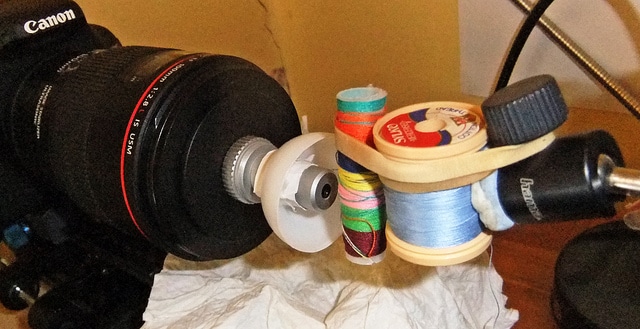The term live cell imaging collectively refers to the technologies used to capture images of cells in a living, active state, either as individual static pictures or as time-lapse series. Correspondingly, the applications of live cell imaging can be divided in two broad categories:
- image recording of cells in their natural, living state
- observing and recording dynamic processes in cells, tissues, or whole organisms in real time
Uses / Applications of Live Cell Imaging
The use of live cell imaging in research has been on the rise, due largely in part to technological advances in fluorescent tag technology, electronics, data processing, and optics.
The discovery of green fluorescent protein in the early 1960s and the widespread usage of its many derivatives since the 1990s marked the beginning of a new era for microscopy. The use of fluorescent proteins, either alone or after producing fused versions of fluorophores, has enabled the monitoring of cells and cellular components, with the number of protein and enzyme targets available constantly increasing.
The ability to visualize cells in their living state has proven to be a very important step forward for cell biology and the fields using cell biology techniques. The difference between a living and a non-living cell are not only related to changes happening during life, but are also related to the changes happening during death. Life is an emergent property of structure, and the cessation of life processes is always related to some changes in structure, whatever the causal sequence. That is, whether the cessation of life was a result of a specific structural change, or the change was a consequence of the cessation, a change is always there.
To add insult to injury, most cell fixation methods do not just stop life processes like a stop-frame stops a movie. Rather, they actively induce changes that lead to death. These can range from simple freezing, to protein precipitation, to protein cross-linking. That is why electron microscopy, for all its value and unparalleled resolution, is often associated with artefacts, and that is why when it is used, the investigator must always bear in mind that the sample being investigated has been subjected to processes that could, potentially, have altered some of its features.
The second – and more obvious- advantage of live cell imaging is, as already mentioned, its ability to record dynamic processes in cells, tissues, or whole organisms as they happen. From cell division – first filmed using phase contrast in the early 1940s – to cell migration in cultures and organotypic slices, to movements and transformations of organelles, to calcium imaging, a plethora of processes can be visualized and recorded in real time. Fluorescent markers labelling specific organelles and markers whose spectral behavior changes in correspondence to chemical changes inside cells and organelles have afforded us with unprecedented insight into the workings of the cell.
Important Considerations for Live Cell Imaging
When working with live cell imaging, the investigator must always bear in mind that there are a number of conditions that need to be met for the technique to be successful and lead to usable results that reflect, as accurately as possible, the state of the living cell. These include:
- Correct culture conditions. Exactly as one would do for any other tissue culture, live cell imaging requires the use of the appropriate cell medium (including buffers and growth serums), proper culture vessels, and sterile technique. Temperature must be at a constant 37°C. Also, to counteract the acidification caused by metabolic products and maintain a pH 7.4, a buffer system of bicarbonate (HCO3–) and dissolved carbon dioxide (CO2) is used, with the gas provided by the appropriate regulator connected to the microscope incubator. If no CO2 is available, a buffer containing 10–20 mM HEPES can also be used. Phenol red in the medium is a usual method of monitoring pH levels. The choice of the culture vessel can also be important. Cells usually grow better on plastic, but glass offers higher optical quality for high magnifications. On the other hand, glass usually requires coating with substrates such as such as poly-L-lysine or poly-L-ornithine. Bacterial contamination is always an issue, so antibiotics are almost always used. In the event that a specific protocol requires that antibiotics are avoided, care in the preparation and maintenance of the culture becomes even more important.
- Safeguarding the cells from phototoxicity. Using fluorescence for imaging can have potentially deleterious effects on cellular homeostasis due to phototoxicity, which can arise from different sources. Organic molecules in the cells such as porphyrins and flavins can absorb light and become degraded upon reaction with oxygen, thereby releasing reactive oxygen species such as superoxide radicals, hydroxyl radicals, and hydrogen peroxide, all of which cause cellular damage. The fluorescent dyes themselves can also produce free radicals, as they can react with oxygen when they are in their excited state. Phototoxicity can be avoided by implementing some simple but effective measures. This includes (1) using fluorophores with lower energy (longer wavelength) excitation spectra, (2) using the lowest possible light intensity and the shortest possible excitation duration, and (3) reducing the frame rate as much as possible, especially in long experiments.
- Appropriate frame rate. When observing changing events, the investigator needs to make sure that the image frame rate is appropriate for following these events. A frame rate that is too low means loss of temporal resolution and a poor representation of the process of interest in the recorded file. On the other hand, a frame rate that is too high increases the risk of phototoxicity and results in the production of bigger files. But what if the velocity of the events to be recorded is so high that the frame rate required leads to phototoxicity? In this case, the excitation light strength must be reduced – but that would lead to dimmer images. The camera’s gain can be increased to compensate for low light, but that means that the noise level increases as well, decreasing the quality and accuracy of the image. An increased camera sensitivity, so as to achieve a satisfying result using the required frame rate at a lower excitation light intensity and a lower gain, is very helpful in this situation. The user has to balance all these parameters in an educated way to achieve the best possible compromise.
The Importance of High Speed Microscopy Instrumentation
Live cell imaging is used to record a wide variety of events and, when time-lapse series are made, the frame rate must be appropriate. For example, when recording cell division, events can occur within a few minutes, as in some fly embryos, or 24 hours, like in fast-dividing mammalian cells. There are, of course, cells that take much longer to divide, but these do not concern us here. In all these examples, a slow frame rate – once every few seconds or even every few minutes- would be sufficient. At the other end of the spectrum, there are very fast events, such as those related to cellular communication (i.e. action potential firing and intracellular calcium signaling events). Using the appropriate temporal resolution allows the precise timing of the phenomenon and its position on the cascade of events taking place in multicellular neuronal networks. Electrophysiological techniques such as patch clamping can achieve very high resolution at a cellular level, but have limited use when observing networks, as only a small number of cells can be monitored at the same time. Additionally, their invasive nature might compromise the phenomena under observation. These shortcomings do not exist when using imaging approaches.
There are different ways to achieve fast imaging with different setups. Confocal point-scanning systems can achieve relatively high frame rates, with dozens of Hz with resonant scanners, but at the expense of spatial resolution. Spinning disk confocal system can achieve higher frame rates, at the level of a few hundred Hz, also at the expense of some spatial resolution, mainly in the Z axis.
Widefield microscopy is still the method of choice when maximum temporal resolution is required. Sensitivity is the most important feature for high speed microscope cameras, as a highly sensitive camera will be able to run at its maximum frame rate under difficult conditions while still giving satisfactory results. The core of a high-speed camera is the sensor, which should be of the CMOS type, for maximum sensitivity; using a global shutter, as a rolling shutter image recording would cause artefacts in fast imaging. A high-speed interface (USB 3.0) can be used for fast transmission of the data.
Lumenera offers a series of high-performance microscope cameras for a wide variety of applications including live imaging. These cameras are designed with proven components using the tightest tolerances, providing high execution and repeatability. Individual cameras are calibrated in the manufacturing process to compensate for individual variations, while final quality inspections are carried out by specialists. More information on available models can be found on the Lumenera product page.
To summarize, live cell imaging has a wide range of applications, but also presents the investigator with a special set of demands that do not exist when imaging fixed cells. Some of these are the same as for any cell culture, but others are particular to live imaging and, broadly speaking, revolve around the optimum compromise between spatial resolution, temporal resolution, and minimization of imaging-induced cellular stress. The use of the appropriate cameras can greatly contribute to the optimization of live cell imaging results.
Originally published November 8, 2018. Reviewed and updated May 2021.






